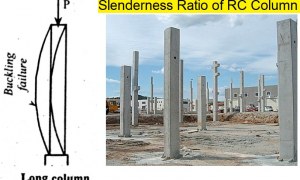🕑 Reading time: 1 minute
Structures are generally subjected to static and dynamic loads. The former is constant with time while the latter is time-varying. The majority of civil engineering structures are designed with an assumption that all the applied loads are static. The effect of dynamic loads is not considered because a structure is rarely subjected to dynamic loads; more so, its consideration in analysis makes the solution more complicated and time-consuming.
This feature of neglecting the dynamic forces may sometimes become the cause of a disaster, particularly in the case of earthquakes. There is a growing interest in the process of designing civil engineering structures capable to withstand dynamic loads, particularly, earthquake-induced load.
There are a number of factors that influence the earthquake resistant design of structure such as structural configuration, lateral stiffness, lateral strength and ductility, in addition to form, aesthetics, functionality and comfort of the building. The behaviour of structures during earthquakes depends critically on these factors. Even if any one of these is not guaranteed, the performance of the building during an
Contents:
Factors Influencing Earthquake Resistant Design of Structures
1. Seismic Structural Configuration
Seismic structural configuration is one of the factors that greatly affect the seismic resistant design of structures. It involves three major aspects which include geometry; shape and size of the building, location and size of structural elements, and location and size of significant non-structural elements.
Buildings with simple configuration are more preferable than complex buildings. For instance, buildings with rectangular plans and straight elevation would have a direct load path for transferring earthquake-shaking induced inertia forces to their foundation for any direction of ground shaking. That is why such configuration shows good performance during an earthquake.

However, buildings with setbacks and central openings offer geometric constraint to the flow of inertia forces. These buildings necessitate bending of load paths for shaking of the ground along certain directions that results in stress concentrations at all points where the load paths bend.

2. Structural Stiffness
The required degree of stiffness in a given structure is achieved by the proper proportioning of the size and materials of structural members. Lateral stiffness is the initial stiffness of the building, even though stiffness of the building reduces with increasing damage.

2. Structural Strength
The strength of structures is controlled by the structural element's dimension and material properties. So, an appropriate proportioning of element sizes and materials should be done so as to obtain a certain degree of strength. Lateral strength is the maximum resistance that the building offers during its entire history of resistance to relative deformation.

4. Ductility of Structure
Ductility is the ability of a building to withstand large displacement demand through structural damage without collapse and undue loss of strength. Achieving sufficient ductility requires extensive laboratory tests on a full-scale specimen to identify the preferred methods of detailing. In conclusion, lateral stiffness, lateral strength and ductility of buildings can be ensured by strictly following most seismic design codes.




